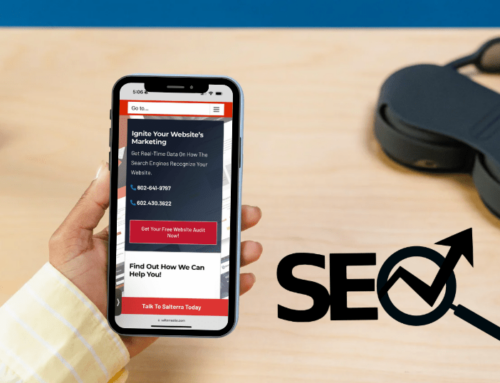
Google prioritizes user experience (UX) as a ranking factor, making Core Web Vitals and page speed essential components of On-Page SEO. Websites that load quickly and offer a smooth browsing experience are rewarded with higher rankings, better engagement, and improved conversions.
At SEO University by Salterra, students learn how to optimize Core Web Vitals and page speed to improve search visibility and user satisfaction. This guide covers how page performance impacts SEO and what steps to take for optimization.
What Are Core Web Vitals?
Core Web Vitals are a set of Google ranking factors that measure website performance and user experience. These metrics focus on:
✔ Loading speed – How fast a page’s primary content loads
✔ Interactivity – How quickly users can engage with the page
✔ Visual stability – How smoothly content appears without unexpected shifts
Google evaluates three key Core Web Vitals to determine site performance:
Largest Contentful Paint (LCP) – Measures Loading Speed
LCP tracks the time it takes for the most significant visible element (image, video, text block) to load.
✔ Ideal Score: Under 2.5 seconds
✔ Improvement Tips: Optimize images, reduce server response time, and enable lazy loading
First Input Delay (FID) – Measures Interactivity
FID evaluates how fast a webpage responds to user actions (clicks, taps, or keystrokes).
✔ Ideal Score: Under 100 milliseconds
✔ Improvement Tips: Minimize JavaScript execution, remove render-blocking scripts, and use browser caching
Cumulative Layout Shift (CLS) – Measures Visual Stability
CLS determines how much-unexpected content shifting occurs as the page loads.
✔ Ideal Score: Below 0.1
✔ Improvement Tips: Set explicit dimensions for images and videos, avoid sudden content shifts, and use font-display: swap
Why Core Web Vitals Matter for On-Page SEO
Google considers Core Web Vitals a direct ranking factor, meaning sites with poor scores may experience lower rankings and reduced traffic.
Improves Search Engine Rankings
Websites that meet Core Web Vitals benchmarks are more likely to rank above slower competitors in search results.
✔ Google rewards pages with fast LCP, low FID, and stable CLS
✔ Mobile-friendliness plays a critical role in SEO rankings, making it essential to optimize sites for mobile users
Enhances User Experience & Engagement
Slow pages frustrate visitors, leading to higher bounce rates and lower conversions.
✔ Fast-loading pages increase session duration
✔ Better UX = Higher trust and engagement
Reduces Bounce Rates & Increases Conversions
Pages that load quickly keep users engaged and encourage more interactions.
✔ 1-second delay in page load time = 7% decrease in conversions
✔ Optimized websites see higher click-through rates (CTR)
Best Practices for Optimizing Page Speed and Core Web Vitals
Optimize Images for Faster Loading Times
Large images slow down page speed. Compress and format images properly to improve LCP and overall load times.
✔ Use WebP format instead of PNG/JPEG
✔ Enable lazy loading to defer off-screen images
✔ Resize images to fit their display dimensions
Reduce Render-Blocking JavaScript & CSS
Excessive JavaScript and unoptimized CSS files delay page rendering.
✔ Minimize JavaScript execution time
✔ Use async & defer attributes for script loading
✔ Eliminate unused CSS with purgeCSS or Autoptimize
Leverage Browser Caching & Content Delivery Networks (CDN)
Browser caching reduces server requests, improving repeat visit load times.
✔ Enable caching via .htaccess or caching plugins
✔ Use a CDN (Cloudflare, Fastly, or Amazon CloudFront) for global distribution
Improve Server Response Time (TTFB)
A slow server response affects LCP and overall page speed.
✔ Choose fast, reliable hosting (Cloud-based or VPS hosting)
✔ Optimize database queries & reduce redirects
Enable Gzip or Brotli Compression
Compressing files reduces page size and improves loading speed.
✔ Enable Gzip/Brotli compression on your server
✔ Reduce HTML, CSS, and JavaScript file sizes
How to Measure and Test Core Web Vitals
Use Google’s free tools to analyze Core Web Vitals and detect performance issues:
✔ Google PageSpeed Insights – Scores page speed & provides optimization suggestions
✔ Lighthouse (Chrome DevTools) – Audits Core Web Vitals and performance metrics
✔ Google Search Console (Core Web Vitals Report) – Tracks Core Web Vitals across site pages
Common Page Speed Optimization Mistakes to Avoid
🔻 Not Compressing Images – Unoptimized images slow down page speed.
🔻 Too Many Redirects – Excessive redirects increase load times.
🔻 Heavy JavaScript Execution – Delays user interaction and increases FID.
🔻 Poor Hosting Providers – Low-quality servers slow down TTFB.
Learn Page Speed & Core Web Vitals Optimization at SEO University by Salterra
A fast, optimized website is crucial for On-Page SEO, higher rankings, and a better user experience. Website performance directly impacts search visibility, making implementing advanced speed optimization techniques essential.
At SEO University by Salterra, we provide:
✅ Core Web Vitals optimization strategies for improved ranking potential
✅ Advanced page speed improvement techniques to reduce load times
✅ Hands-on training for performance testing & SEO growth
For those looking to refine their technical skills, our online technical SEO training also covers site architecture, crawlability, structured data, and mobile-first indexing, helping you optimize your site for users and search engines.
📢 Want to improve your search rankings? Learn Core Web Vitals and On-Page SEO at SEO University by Salterra!
About SEO University by Salterra – Your Trusted Source for On-Page SEO Training
SEO University by Salterra is a leading provider of expert-led SEO training, specializing in On-Page SEO, content optimization, website siloing, and advanced schema markup. With locations in Mesa, Arizona, and Colorado Springs, Colorado, SEO University equips digital marketers, business owners, and web developers with the skills needed to improve search visibility, enhance website structure, and dominate organic rankings.
Why Choose SEO University by Salterra?
Founded by SEO expert Terry Samuels, SEO University focuses on hands-on, real-world SEO education that delivers immediate results. Unlike generic online courses, our training sessions are live, interactive, and tailored to real business needs. We teach the most up-to-date search engine optimization techniques, ensuring students master strategies that actually move the needle in search rankings.
Core SEO Training Services
✔ On-Page SEO Mastery – Learn how to optimize title tags, meta descriptions, header tags, and internal linking strategies for better search engine rankings.
✔ Advanced Schema Markup & Structured Data – Implement JSON-LD structured data to enhance Google Rich Snippets and improve crawlability and indexation.
✔ Website Siloing & Content Architecture – Organize website content using silo structures to strengthen topical authority and improve Google’s understanding of your site hierarchy.
✔ Technical SEO & Site Audits – Identify and fix indexing issues, improve Core Web Vitals, and enhance mobile-friendliness for better user experience.
✔ SEO Content Strategy & Keyword Research – Learn how to craft high-quality, keyword-rich content that satisfies search intent and engages users.
✔ Local SEO & Google Business Profile Optimization – Improve local search visibility and optimize Google My Business listings for location-based searches.
Trust, Authority, and Industry Recognition
SEO University by Salterra has earned a reputation for excellence in On-Page SEO training. Our methodologies are built on years of hands-on SEO experience, continuous research, and proven ranking strategies. Terry Samuels, the founder, is a recognized SEO consultant and speaker, frequently presenting at top industry conferences, including SEO Spring Training and Local Client Takeover.




